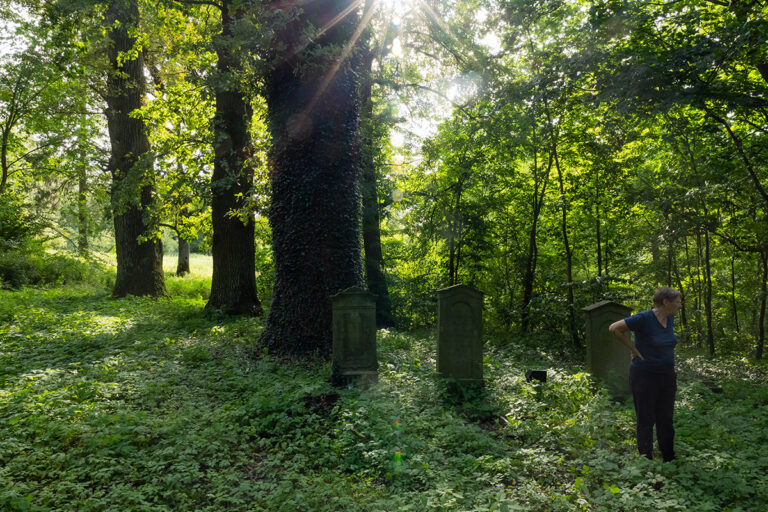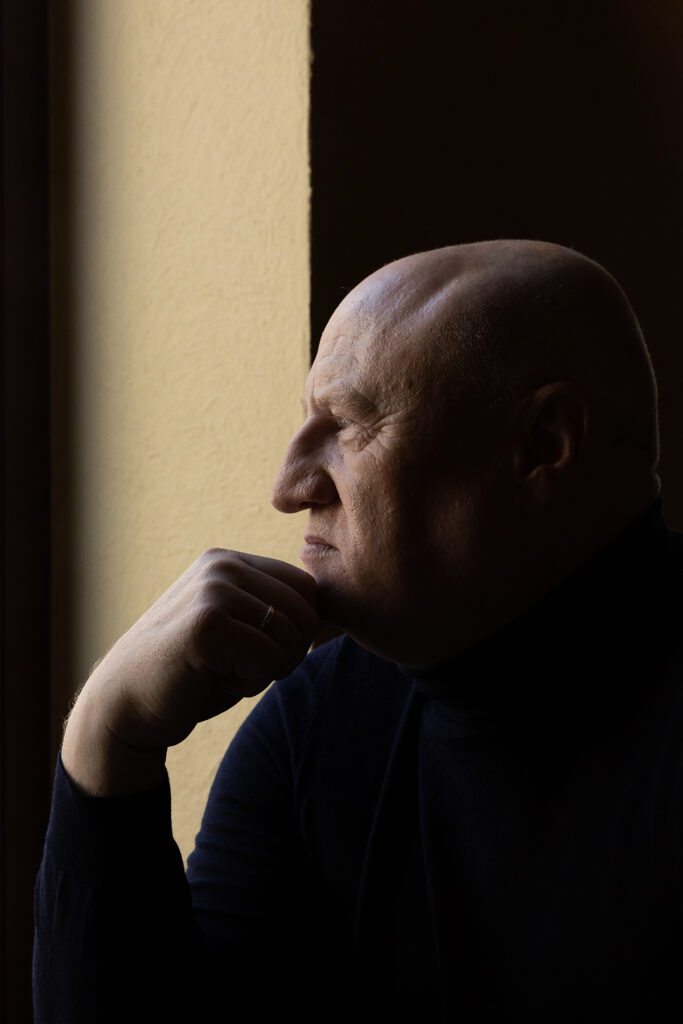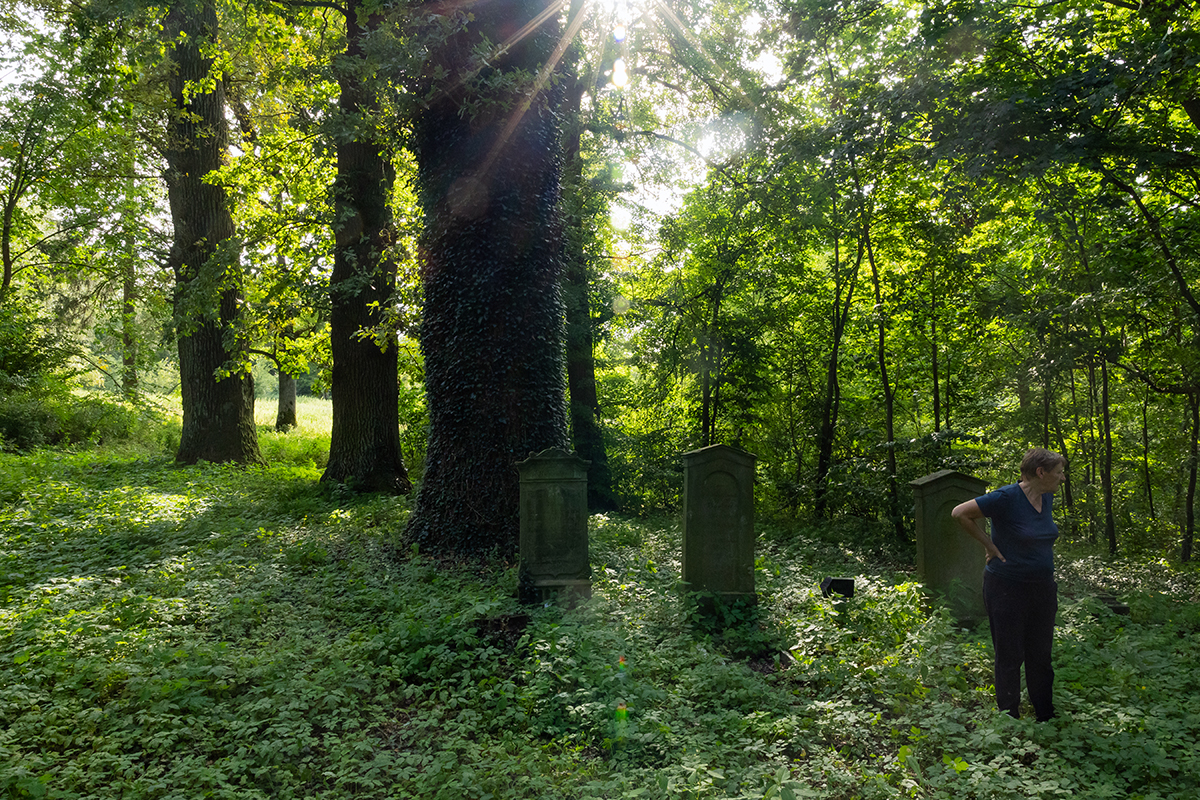Pilgrimage: Beowulf Sheehan on Author Photos and the Search for Home

This first appeared in Lit Hub’s Craft of Writing newsletter—sign up here.
In my work with writers I’ve been given, through their works and our times together, windows to their villages and their homes. Windows through which readers may also look with each and every book. As I’ve had the good fortune of photographing more and more storytellers over time, my curiosity to glimpse more grew, taking me, in time, to other cities and countries, discovering cultures and histories through those portrait sessions abroad.
The village of my own journey has been vast, with love and nurturing from many beyond my immediate family, graces I still have much to do to pay forward. My father didn’t say much of his (and my) Irish roots in his lifetime. He didn’t take me there. My mother came to the US from Germany in 1962, the only member of her family to immigrate to this country. Her father Leopold Boehm was born in East Prussia, a province lost to the second world war, in a community that is now part of Poland. The search for a better life in the face of changing conditions led him to Ahrensburg, near Hamburg, before Hitler rose to power and expanded his military into East Prussia in 1939, before Stalin split the country between Poland and Russia following the defeat of the Nazis in 1945.
My maternal grandfather struck me as a relic from another time, a renaissance man when the renaissance had long passed. A photographer. A poet. A pianist. A former fencer who was too much of “a man” to wear a mask, cut marks down the sides of his face the souvenirs from his youth.
For much of my childhood I didn’t understand the mention of Ostpreußen (East Prussia), a place that didn’t exist. I didn’t understand the mention of Glaubitten, a community that didn’t exist. In time I learned what war was, who dictators were, and what they did in writing histories of human brutality. I learned how places ceased to exist. How my grandfather could live in both the present and in a time that had ceased to exist.
Before this year, I had never been to Poland. I had, however, licensed a few author portraits to publishers there. And I took upon myself to reach out to them and offer to photograph writers for them.
9:00 AM Wednesday, August 14, and, at the kind arrangement of Polish publisher Agora, celebrated historical-fiction thriller writer Maciej Simbieda and his makeup artist/groomer Agata are in my hotel room in Gdansk. (His newest story Kairos is a trilogy of Polish and Greek criminal history that spans much of the last century. Our winning picture will promote it.) We exchange our hellos and compliments and get to it. And I get to know the city and him. Maciej tells me the church is the biggest brick house of worship in the world. My hotel is part of a building founded in 1451. The Motława River made Gdansk the multinational hub it became and remained. Sopot, just west, had locations such that you could, if were so adventurous, swim the Baltic and ski the Łysa Góra in the same morning or afternoon. With Gdynia to the northwest, Sopot and Gdansk formed the “Polish Riviera.”
 The writer Maciej Siembieda (Poland), Gdansk (Danzig), Poland, August 14, 2024. Photograph © Beowulf Sheehan beowulf@beowulfsheehan.com
The writer Maciej Siembieda (Poland), Gdansk (Danzig), Poland, August 14, 2024. Photograph © Beowulf Sheehan beowulf@beowulfsheehan.com
We work together at the Academy of Fine Arts, at St. Mary’s priests’ private courtyard, on the streets, at a café, and ultimately as guests on the grounds of the Muzeum Narodowe w Gdańsku (National Museum in Gdansk). The museum’s great treasure was Hans Memling’s The Last Judgment. The Flemish painter’s masterpiece was commissioned by a director of the Medici Bank. It was seized from its vessel, captured by a “privateer” in Gdansk in 1473, never to finds its way to Italy. I asked the curator what happens if the Netherlands or Italy calls after the piece. She replied that they “don’t answer the phone.”
 The writer Maciej Siembieda (Poland), Gdansk (Danzig), Poland, August 14, 2024. Photograph © Beowulf Sheehan beowulf@beowulfsheehan.com
The writer Maciej Siembieda (Poland), Gdansk (Danzig), Poland, August 14, 2024. Photograph © Beowulf Sheehan beowulf@beowulfsheehan.com
Maciej takes me to a late lunch. I thank him for the opportunity and for the introduction to his part of Poland. “Now you can tell your friends Poland is beautiful and know you’re telling the truth,” he says.
With my second day overseas behind me, I give into jet lag soon after a quiet dinner on the Motława and backing up the picture files online. I wake the next morning, Thursday, August 15, packed my bags, and head for the Gdansk Airport. The young man at the airport rental car counter asks for my credit card, passport, driver license, and international driver permit. I tell him the site I used to reserve the car didn’t inform me about such a permit. He tells me most such US sites don’t but that the permit is needed in Poland. I explain that I had flown to Poland with the intention of then traveling further east, to visit the land of my maternal forbears. He directs me to a bogus permit website. I do the honors, and he encourages me to not get stopped by the police.
Some five hours later, urban areas long behind me and signs announcing distances to Kaliningrad, Lithuania, and Belarus recently behind me, my excitement at finding myself deep in the plains of Poland borders on jubilation. However remote, cellular signal is strong, and I can see I am minutes from Głowbity, once Glaubitten, the land my forebears loved and that loved them back for centuries.
 Photograph by Beowulf Sheehan
Photograph by Beowulf Sheehan
Showered, excited, and some ten minutes’ drive from Głowbity, I call Helene Łuzowska, now 96, whose parents had worked for my great grandparents. She welcomes me to Poland and tells me I am welcome to come over. Her daughter Tereza is ready to give me a tour. I soon turn from a quiet, tree-lined street to a dirt road, her house the first (and only) one on it. Tereza, Helene, their dog Pusheck, and their fifty-odd chickens—Tereza makes her living taking eggs to market almost every day—welcome me to their home. We speak in German. Tereza explains that likely nobody else in Głowbity, current population fifty-four, speaks German. We walk and, in a few minutes’ time, the light pouring in from among trees to the west, Tereza gestures that the house had been on the other side of those trees. Approaching the trees, I see the graves.
 Photograph by Beowulf Sheehan
Photograph by Beowulf Sheehan
Though my family now has no claim to this land, I discover it has its own cemetery. Perhaps some twenty tombs strewn about, almost all of them overcome by nature, canvases of foliage stretched about frames of stone. Part of the blood in my body is, or was, in the ground beneath my feet. I feel a deep love for my family I’ve never seen before. I am overcome. I am home.
 Photograph by Beowulf Sheehan
Photograph by Beowulf Sheehan
Only four graves have headstones. Three of them are undamaged, save for the ravages of nature and time. Translated from the German, the oldest of them reads, “Here rests Ferdinand Michael Böhm, born May 23, 1776, died December 1838, Johanna Wilhelmine Böhm, born Shubich, born December 6, 1786, died October 21, 1835.” Next to this headstone, another, and it reads, “Hanna Dorothea Elisabeth Boehm, born Burckhardt, born September 10, 1788, died January 22, 1849.” I am struck by the change in the family name, from “Böhm” to “Boehm”, the only spelling I’ve ever known.
 Photograph by Beowulf Sheehan
Photograph by Beowulf Sheehan
I sit with the graves, Tereza patient and distanced as I do. When I stand, she resumes our tour. She shows me different locations of what had been paths to my family’s house. Paths now to bushes and trees, paths filled with bushes and trees.
 Photograph by Beowulf Sheehan
Photograph by Beowulf Sheehan
I reflect that arriving at this day is partially inspired by a letter sitting a drawer in New York. In 1991 I had received a letter from my grandmother, on its envelope a Deutsche Bundespost stamp bearing the portrait and name of activist, author, educator, and organizer Elisabet Boehm.

It was later explained to me that the stamp was recognition for her having founded the first Landwirtschaftlichen Hausfrauenvereins (“Agricultural Housewives’ Society”), then-Prussia, now-Germany’s first women rights’ union (in 1898) and was recognition for founding the Landwirtschaftliche Frauenschule, the country’s first women’s vocational school (in 1912). My great great aunt Elisabet was born in 1859 in Ketrzyn, where I had my hotel room, and died in 1943, her urn buried in the family cemetery in Głowbity.
 Photograph by Beowulf Sheehan
Photograph by Beowulf Sheehan
I wake to Friday, August 16, and I have a quest. From Tereza I had learned the day before that a plaque honoring Elisabet rested at the center of a manor called “Gutshof Lamgarben” in Garbno, a village near to Głowbity. I find the manor. Surrounded by high fences scaled by weeds and vines, I can see the buildings but not the homage to my great-great aunt at their center. I dare not hop the fence. (From Tereza I had also learned that the school Elisabet had founded still existed and was still in use – in Kaliningrad, called Königsberg when the land was part of Prussia. Now that it’s part of Russia, I have no legal way in and, perhaps not unlike the Garbno manor, no way out.) Mystery, I’m coming to accept, can be a good thing.
 Photograph by Beowulf Sheehan
Photograph by Beowulf Sheehan
I ring Tereza and return to her house. I hug Helene as she watches television, and Tereza pulls an envelope from a shelf, giving me its contents: Prints of photographs of my forebears. Some are more than a century old. One is of my returned, then 74-year-old grandfather, standing in 1977 where I had walked just yesterday. Tereza asks me to take all of them with me.

*

On my drive back to my hotel, I am stopped by two police officers. I ask why I was stopped, and one officer explains that the town-in-silhouette sign I’d often seen means a speed limit of 40 kilometers per hour. I had been driving sixty, the limit of the last numbered sign I’d seen. They ask what I’m doing in Poland. I explain. The officers don’t know of Głowbity but do know of the larger village Garbno. I am asked for my international driver permit, and on my phone I show a copy of the fake ID bought online. One officer asks if my name is from a movie of the same name. Yes, but I’m named after the poem that precedes the movie. The other asks why I’m photographing the mural (of a lance-wielding knight on horseback) on a wall of the school behind me. I reply that my high school had a similar mural and learn from the officers the school and mine had the same mascot. I avoid a trip to the police station and avoid a fine. We make a selfie, and the officers wish me good luck with the rest of my trip.

My pilgrimage to Poland taught me the beauty of being home. Home, like history, is at once both expansive and incomplete, a necessary mystery. There is wonder in the attempt to solve it. I’m not simply German. Not just Irish. Not (by birth, to a Boehm and to a Sheehan) only American. I am these things and more. I am a proud Pole. I—we—contain multitudes.
It is September. Maciej’s art director Joanna sends me samples of the advertisements for his new thriller that will soon be placed with my pictures of him across Poland. My collection of prints of photographs of my maternal forebears is grown, safe in a tin near my favorite picture of my grandfather Leopold Boehm, behind a frame.